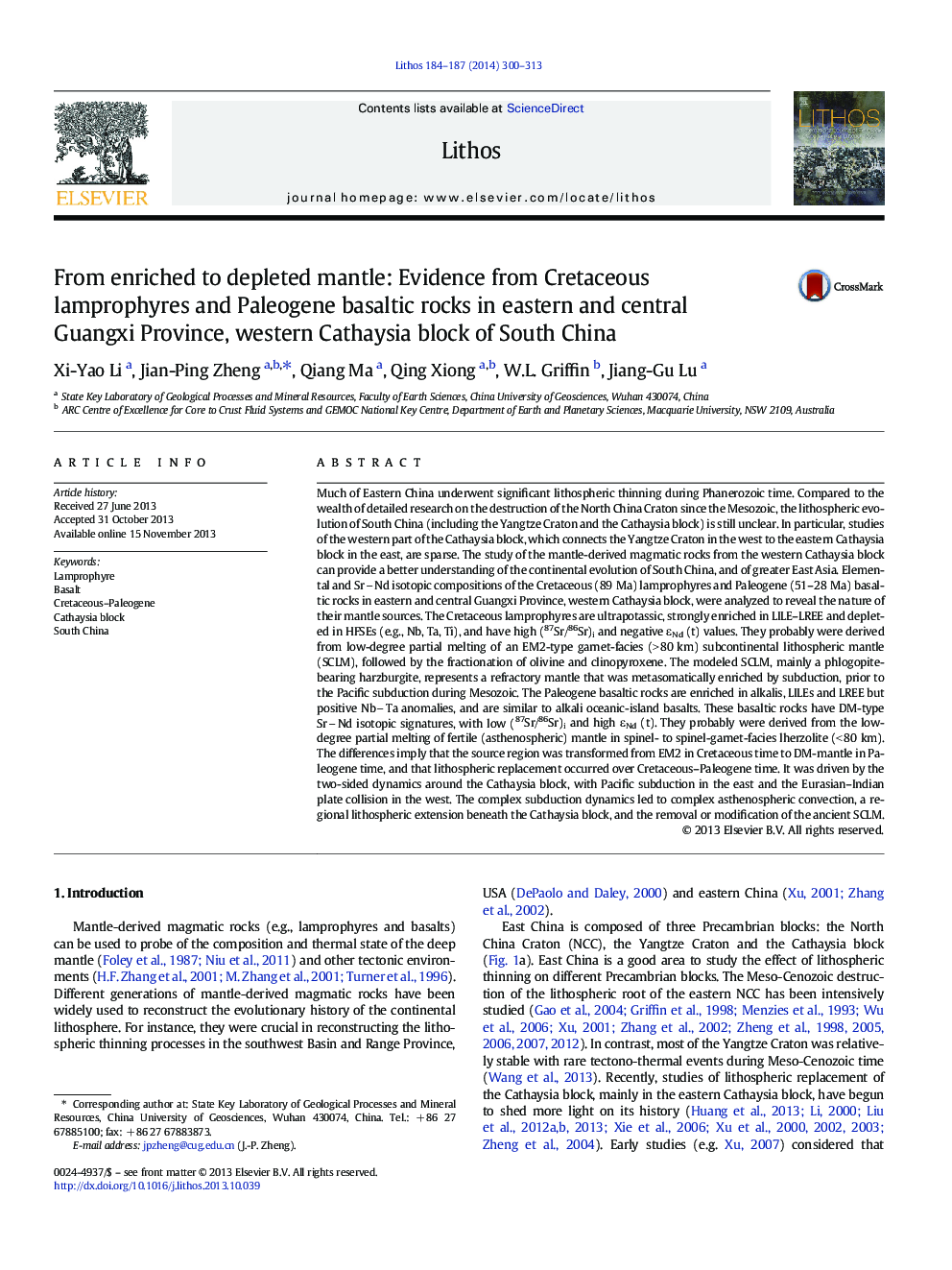| کد مقاله | کد نشریه | سال انتشار | مقاله انگلیسی | نسخه تمام متن |
|---|---|---|---|---|
| 4716133 | 1638683 | 2014 | 14 صفحه PDF | دانلود رایگان |
• Cretaceous lamprophyres and Paleogene basalts in the western Cathaysia block.
• From enriched to depleted mantle during Cretaceous–Paleogene time.
• Dynamics derived from the Pacific subduction and the Eurasian–India plate collision.
Much of Eastern China underwent significant lithospheric thinning during Phanerozoic time. Compared to the wealth of detailed research on the destruction of the North China Craton since the Mesozoic, the lithospheric evolution of South China (including the Yangtze Craton and the Cathaysia block) is still unclear. In particular, studies of the western part of the Cathaysia block, which connects the Yangtze Craton in the west to the eastern Cathaysia block in the east, are sparse. The study of the mantle-derived magmatic rocks from the western Cathaysia block can provide a better understanding of the continental evolution of South China, and of greater East Asia. Elemental and SrNd isotopic compositions of the Cretaceous (89 Ma) lamprophyres and Paleogene (51–28 Ma) basaltic rocks in eastern and central Guangxi Province, western Cathaysia block, were analyzed to reveal the nature of their mantle sources. The Cretaceous lamprophyres are ultrapotassic, strongly enriched in LILE–LREE and depleted in HFSEs (e.g., Nb, Ta, Ti), and have high (87Sr/86Sr)i and negative εNd (t) values. They probably were derived from low-degree partial melting of an EM2-type garnet-facies (> 80 km) subcontinental lithospheric mantle (SCLM), followed by the fractionation of olivine and clinopyroxene. The modeled SCLM, mainly a phlogopite-bearing harzburgite, represents a refractory mantle that was metasomatically enriched by subduction, prior to the Pacific subduction during Mesozoic. The Paleogene basaltic rocks are enriched in alkalis, LILEs and LREE but positive NbTa anomalies, and are similar to alkali oceanic-island basalts. These basaltic rocks have DM-type SrNd isotopic signatures, with low (87Sr/86Sr)i and high εNd (t). They probably were derived from the low-degree partial melting of fertile (asthenospheric) mantle in spinel- to spinel-garnet-facies lherzolite (< 80 km). The differences imply that the source region was transformed from EM2 in Cretaceous time to DM-mantle in Paleogene time, and that lithospheric replacement occurred over Cretaceous–Paleogene time. It was driven by the two-sided dynamics around the Cathaysia block, with Pacific subduction in the east and the Eurasian–Indian plate collision in the west. The complex subduction dynamics led to complex asthenospheric convection, a regional lithospheric extension beneath the Cathaysia block, and the removal or modification of the ancient SCLM.
Journal: Lithos - Volumes 184–187, January 2014, Pages 300–313
